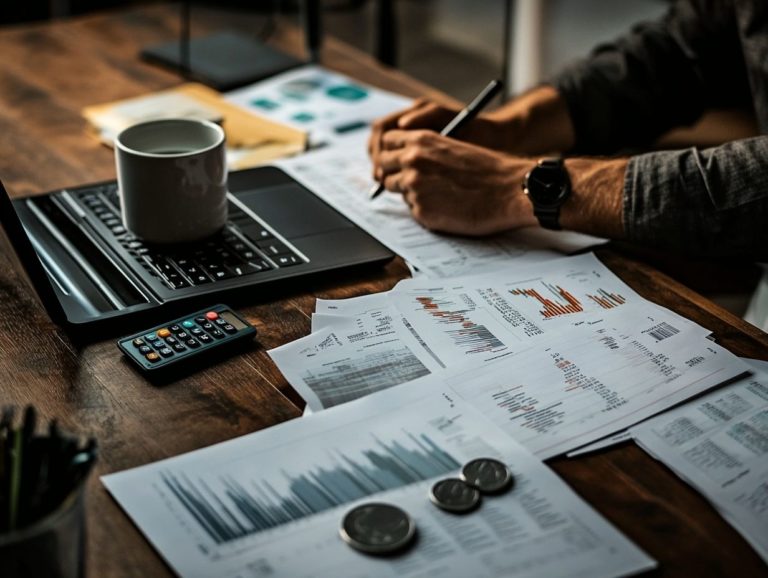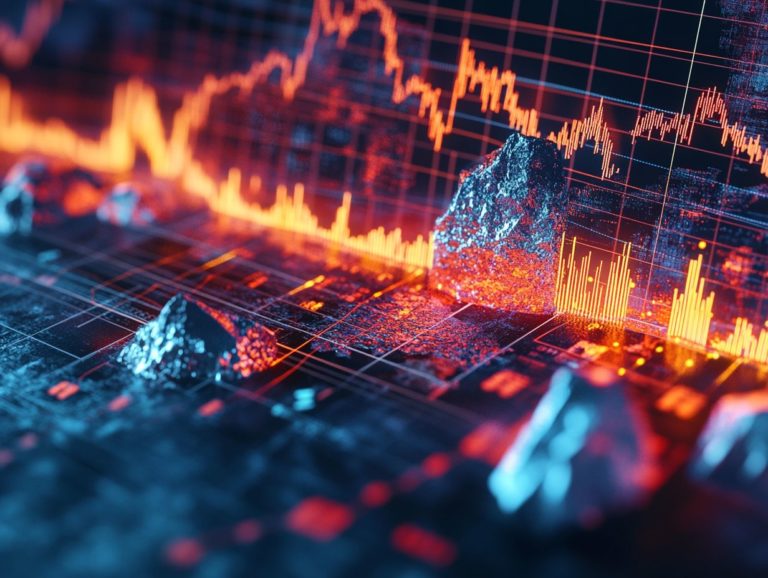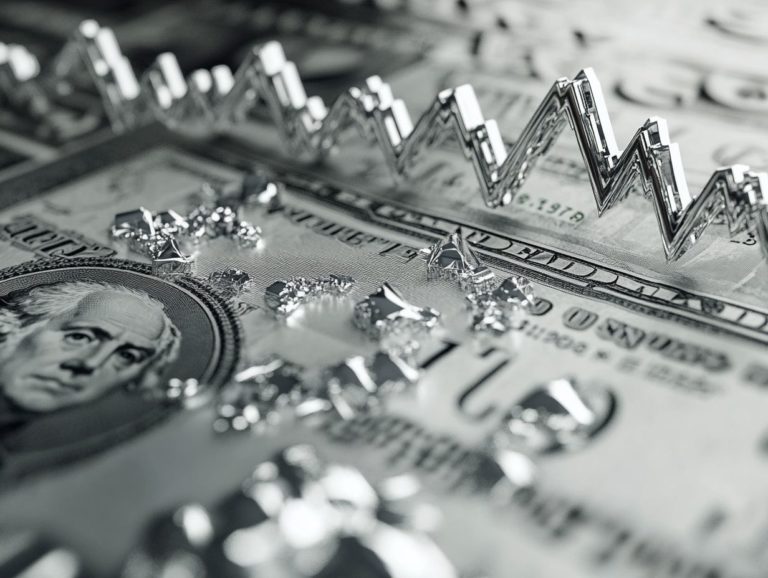The Global Supply Chain of Silver
Silver occupies a crucial position in global supply chains. It caters to various industries, including electronics and jewelry.
As the demand for this precious metal continues to escalate, grasping its various applications and production processes becomes vital for you. This article delves into the essential aspects of silver mining, highlighting key producing countries along with the environmental and social implications of extraction.
You ll discover the refining and distribution hurdles encountered in bringing silver to market. You will also learn about its significance in international trade and the broader global economy.
Embark on this journey with us as we unravel the complex path of silver through the global supply chain.
Contents
- Key Takeaways:
- The Importance of Silver in Global Supply Chains
- Silver Mining and Production
- Silver Refining and Distribution
- The Role of Silver in International Trade
- Frequently Asked Questions
- What is the global supply chain of silver?
- What are the main sources of silver in the global supply chain?
- How is silver refined in the global supply chain?
- Who are the key players in the global supply chain of silver?
- What factors affect the global supply chain of silver?
- How does the global supply chain of silver impact the environment?
Key Takeaways:
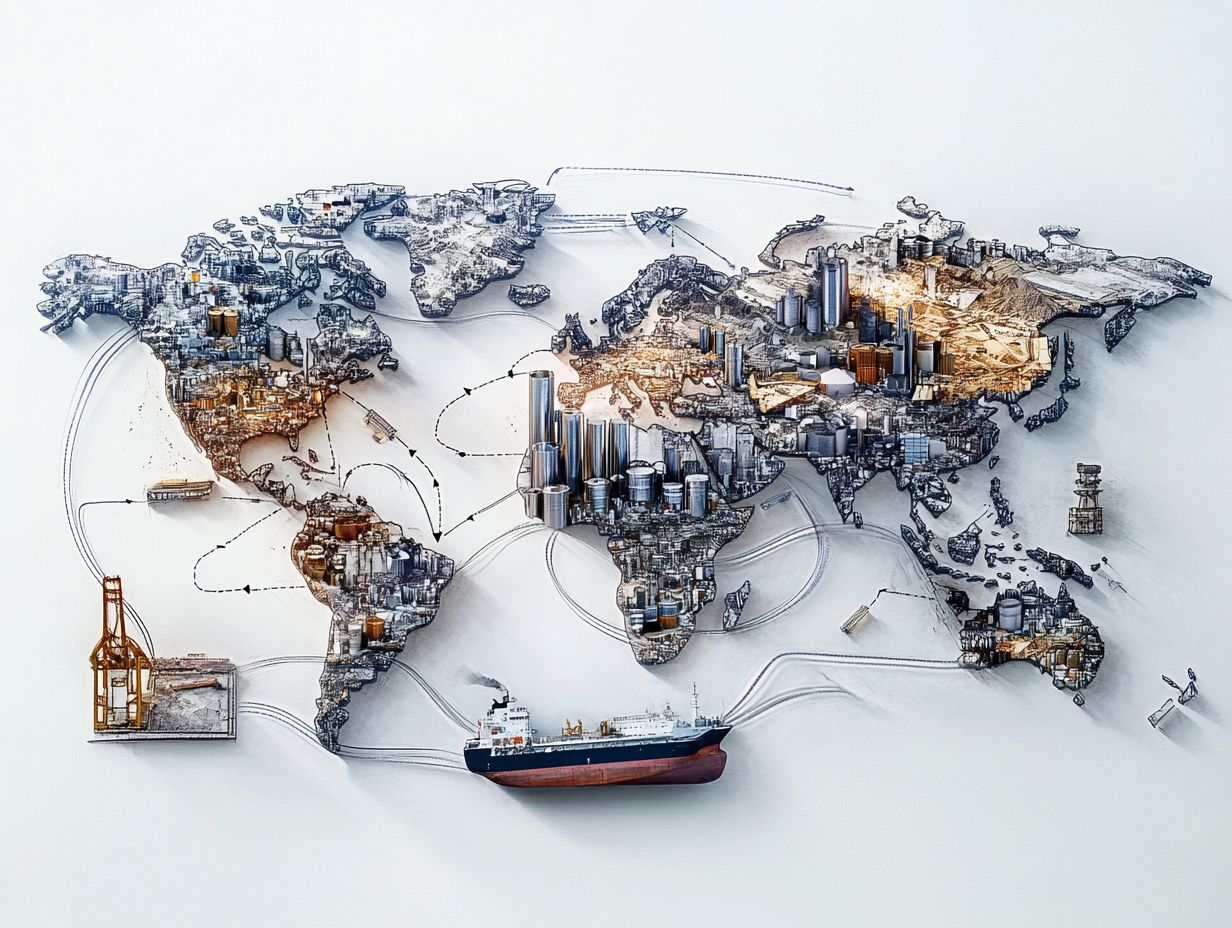
- Silver is a crucial component in global supply chains, with diverse uses and high demand in various industries.
- The top silver-producing countries are at the heart of this fascinating global market, but environmental and social impacts must be carefully managed.
- Silver refining and distribution processes, along with its role as a commodity, significantly impact international trade and the global economy.
The Importance of Silver in Global Supply Chains
Silver occupies a crucial position in global supply chains, thanks to its versatility and essential applications across sectors like electronics, jewelry, and renewable energy. As both a precious metal and a key industrial player, the growing demand for silver is primarily driven by its expanding use in solar panels, automotive components, and consumer electronics.
You may have noticed that the silver market has seen considerable price fluctuations lately. These changes are influenced by global economic dynamics, investment trends, and evolving regulatory frameworks surrounding silver production and recycling practices. Additionally, understanding the supply chain of palladium can also provide valuable insights into the precious metals market.
Uses and Demand for Silver
Silver stands out for its multitude of applications, from the exquisite craftsmanship of jewelry to its pivotal function in vital industrial sectors like consumer electronics and photovoltaics. This remarkable metal not only epitomizes wealth in elegantly designed adornments but also plays a fundamental role in cutting-edge technologies that enhance modern life.
Recently, you’ve likely noticed a surge in industrial demand for silver, especially in renewable energy. Its outstanding conductivity is essential for solar panels.
The interplay between investment interests and practical applications adds complexity to the market dynamics. Investors are keen to harness silver’s value while manufacturers require a consistent supply to meet escalating technological demands. Therefore, understanding the value of physical silver and how these elements are interconnected is crucial to grasping silver’s significance in today’s economy.
Silver Mining and Production
Silver mining and production play a crucial role in the global supply chain. Substantial output comes from key mining nations like Mexico and Peru.
These countries are committed to adhering to rigorous regulatory standards that promote sustainable practices. This ensures that their operations not only meet demand but also protect the environment for future generations.
Major Silver Producing Countries
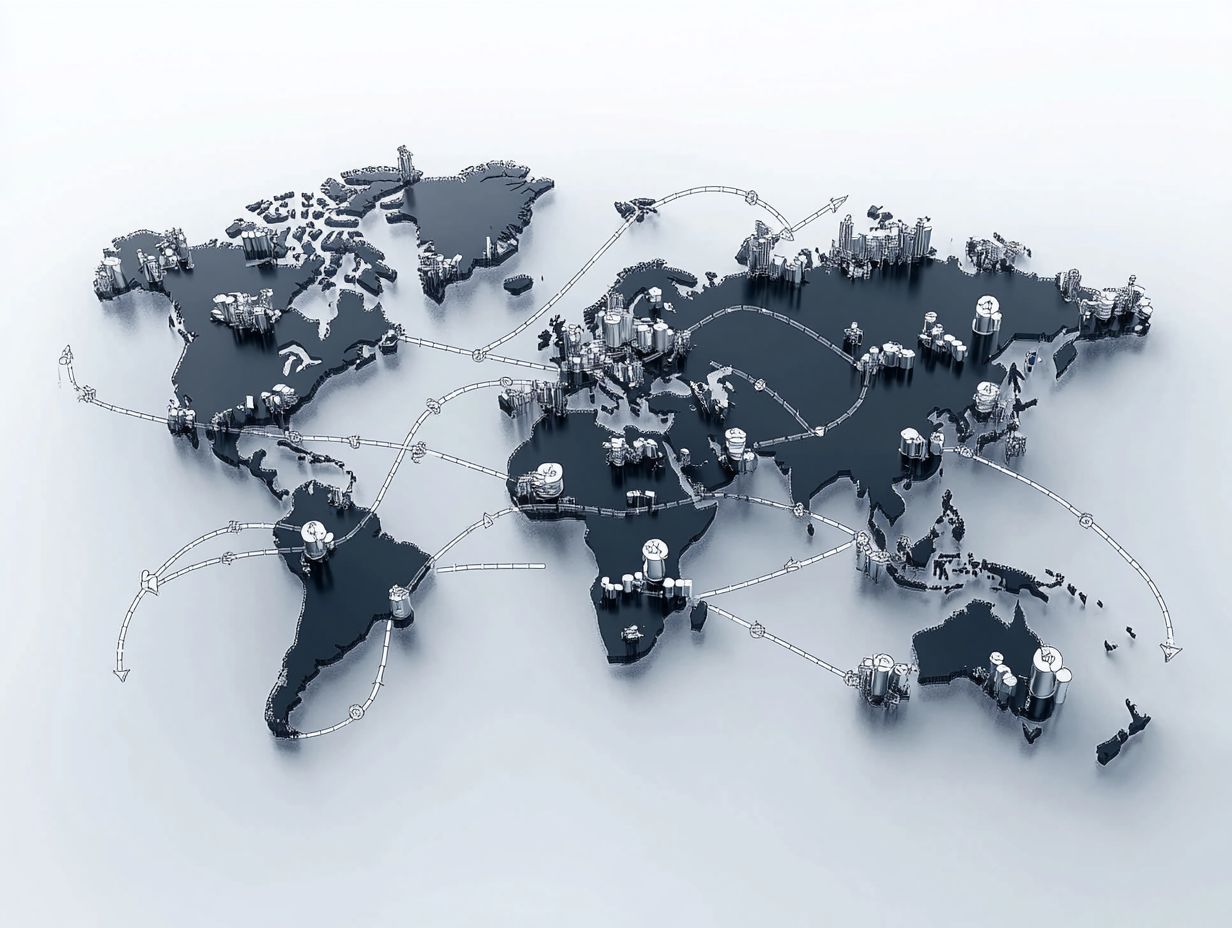
The leading silver-producing countries, notably Mexico, Peru, and Chile, hold a commanding presence in the global market. These nations significantly contribute to overall silver production and are pivotal in shaping international supply chains.
Within these borders lie some of the world’s most influential mining companies, such as Fresnillo and Grupo M xico in Mexico, along with Buenaventura in Peru. Each of these enterprises employs advanced mining technologies and thorough exploration efforts to extract silver from rich deposits.
This not only strengthens their local economies but also plays a vital role in determining the global silver supply. As these countries enhance their production capacities, they exert considerable influence on market dynamics, affecting everything from pricing trends to the availability of silver for both industrial applications and investment opportunities.
Environmental and Social Impacts
The environmental and social impacts of silver mining are significant. They raise serious concerns about sustainability and the impact on the environment.
Silver extraction often disrupts habitats, transforming or destroying entire ecosystems. Pollutants released during mining can contaminate local water sources, threatening wildlife and the communities that depend on them.
Socially, local communities often face displacement and disruption. Innovative sustainable practices, such as eco-friendly extraction methods and strict environmental regulations, can help reduce these issues.
Prioritizing responsible silver sourcing protects the environment and supports local populations.
Silver Refining and Distribution
Silver refining and distribution are crucial in the supply chain. They transform raw silver into high-purity forms that meet the needs of various industries.
Refining Processes and Technologies
Silver refining uses advanced technologies to achieve high purity levels. This helps meet industry standards and recycling demands efficiently.
Techniques include smelting (heating ore to extract metal), electrolysis (using electricity to separate metals), and chemical refining. Each step is vital for ensuring the final product is valuable and applicable across many industries.
Recycling is essential in the silver supply chain, complementing primary production. By reclaiming silver from used products and industrial waste, we enhance sustainability, reduce costs, and minimize environmental impact.
Distribution Channels and Challenges
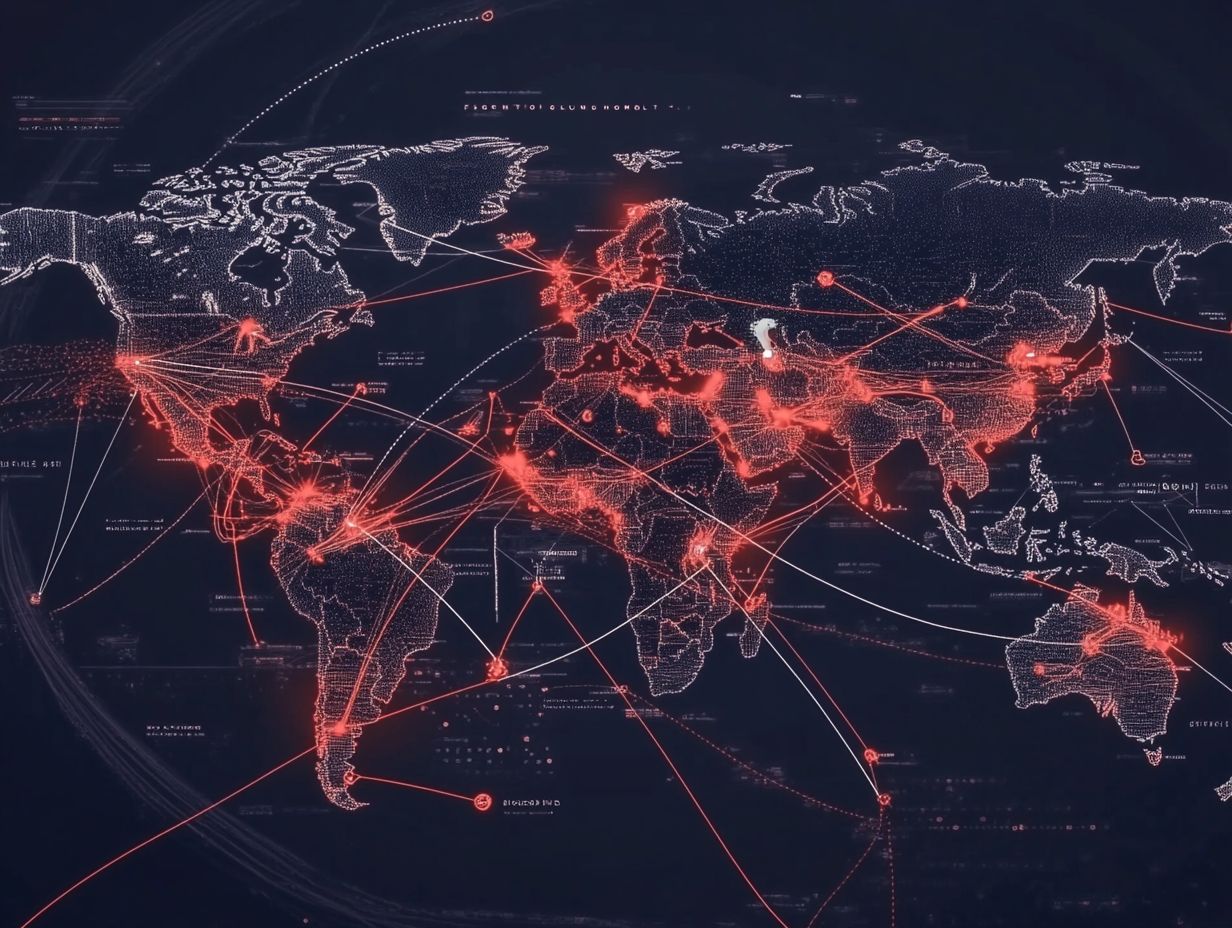
Silver distribution involves complex networks that face challenges like regulatory compliance and logistical issues. Navigating these complexities requires understanding various distribution methods, such as direct selling, wholesalers, and retail outlets.
Each channel has unique benefits. Direct selling can lower costs, while wholesalers often have a wider market reach.
Challenges like fluctuating demand, geopolitical issues, and market volatility complicate logistics. Addressing these obstacles makes effective supply chain management practices essential.
Investing in technology and building strong relationships with suppliers streamlines operations. This ensures timely delivery and improves traceability, contributing to a resilient silver market.
The Role of Silver in International Trade
Silver plays a pivotal role in international trade. It is not just a valued commodity but also a key indicator of the global economy’s health.
Silver as a Commodity
Silver is a highly sought-after asset in international trade. It attracts substantial investment due to its dual role as a precious metal and an industrial resource.
Its remarkable properties, including outstanding conductivity and resistance to corrosion, make it essential across various sectors such as electronics, solar energy, and healthcare. Historically, silver has served as currency and a reliable store of value, solidifying its esteemed status over the centuries.
Today, investors are increasingly drawn to silver not only for its aesthetic allure and monetary capabilities, but also as a smart protection against inflation and economic volatility.
The growing industrial applications and shifts in consumer behavior amplify the demand for this versatile metal, presenting an enticing opportunity for both seasoned investors and newcomers to the market.
Impact on Global Economy
The fluctuations in silver prices can significantly impact the global economy, shaping investor confidence and influencing stock market dynamics.
These variations closely link to key economic indicators such as inflation rates, employment figures, and interest rate changes. Together, they mold market sentiment. When volatility occurs in these metrics, you might find yourself considering precious metals like silver as a protective measure against economic uncertainty.
The relationship between silver prices and currency strength is crucial; a weakened dollar often leads to heightened demand for silver, driving prices upward. Understanding this connection can enhance your investment strategies. Don t miss out on the opportunity to safeguard your wealth!
Frequently Asked Questions
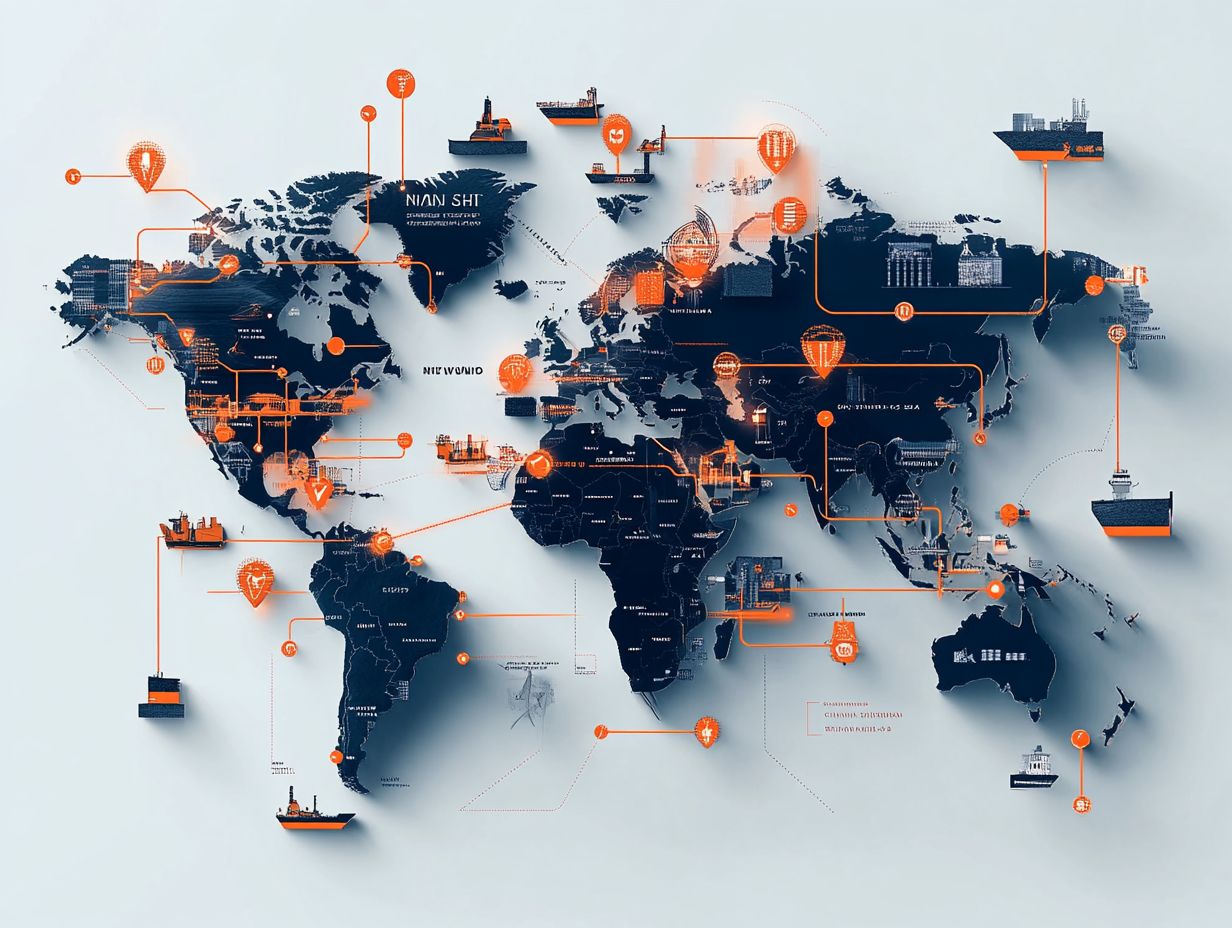
Curious about silver? Here are some frequently asked questions that can help you understand its global supply chain.
What is the global supply chain of silver?
The global supply chain of silver refers to the process of producing, refining, and distributing silver from its source to the end consumer. This involves various players and steps along the way.
What are the main sources of silver in the global supply chain?
The main sources of silver include mining operations, recycling of old silver products, and as a byproduct of other mining processes such as copper, lead, and zinc mining.
How is silver refined in the global supply chain?
Silver is typically refined through a process called electrolysis. In this process, impurities are removed using an electrical charge, resulting in high-purity silver suitable for various industries.
Who are the key players in the global supply chain of silver?
The key players include mining companies, refiners, manufacturers, wholesalers, and retailers. Each role is essential in the supply chain.
What factors affect the global supply chain of silver?
The global supply chain can be influenced by various factors such as changes in demand, fluctuations in prices, availability of raw materials, technological advancements, and government regulations.
How does the global supply chain of silver impact the environment?
The global supply chain can significantly impact the environment, particularly through mining and refining processes. It is vital for companies to adopt sustainable practices to minimize their environmental footprint.











